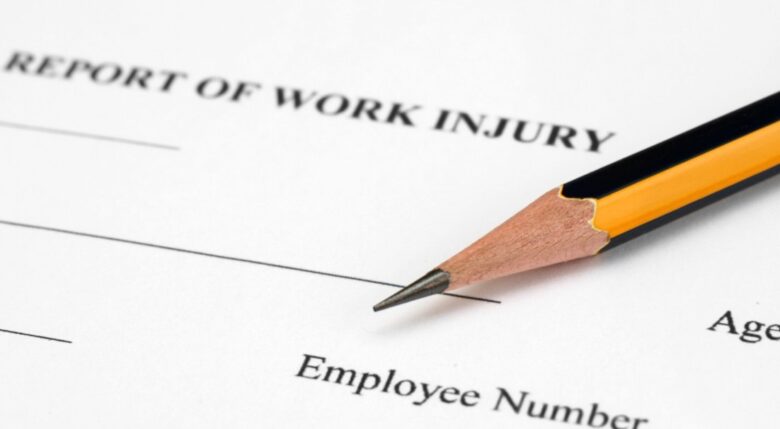Getting injured at work is not all fun and games. Whether it’s a papercut from a rogue file or something serious like a tumble down the stairs while chasing after your spilled coffee, workplace injuries can range from the “oops” to the “ouch” to the “OMG!” But fear not!
This guide will walk you through the whole shebang – from the moment you say “that’s gonna leave a mark” to filing that all-important injury claim.
What Just Happened?
The first thing to do when you get hurt at work (after you stop swearing, of course) is to figure out what happened and how bad it is and to take a look at injured.ca. If you can, take a mental note of what caused the injury and your immediate symptoms.
This isn’t just for drama; it’s important info for later steps. If your injury is more than just a minor annoyance, like if you can’t walk off a fall or stop the bleeding with a simple bandage, it’s time to call in the professionals—yes, this might mean a trip to the emergency room or at least a call to your doctor.
Tell the Powers That Be
Once you’ve handled the immediate medical stuff, you need to report your injury to your boss or whoever is in charge. This isn’t tattling—it’s a crucial step in the workplace injury protocol. Informing your supervisor as soon as possible helps document that the injury happened at work and not while you were moonlighting as a circus acrobat over the weekend.
Most places have forms for this, so you might have to fill out some paperwork. Yes, it’s annoying, but it’s also super important for the next steps.

Source: pinterest.com
The Doctor Is In
Your next move is to see a doctor, and not just any doctor, but one who knows a thing or two about workplace injuries (if your workplace has a specific clinic or doctor for these cases, head there).
This isn’t just to get a bandaid or some cool stitches; you need a medical report that outlines what your injuries are, how they were treated, and what needs to be done to help you heal. This report will be your best friend when it comes to making an injury claim.
Let the Paperwork Begin!
Now comes the part that everyone loves to hate: the paperwork. Filing a claim for a workplace injury can feel like you’re trying to solve a Rubik’s cube blindfolded.
But it’s necessary because it officially puts your injury on record and sets the wheels in motion for getting your medical bills paid and possibly covering your lost wages if you’re out of commission for a while. Make sure to fill out every form as accurately as possible, and keep copies of everything. If filling out forms were an Olympic sport, this would be your gold medal moment.
The Waiting Game
After you’ve submitted your claim, there’s not much to do but wait. This part can be as frustrating as watching paint dry. The insurance company will review your claim, check out your medical report, and probably ask a million questions.
they might even want you to see another doctor for a second opinion. Patience is key here. Keep in touch with your employer or HR department to see if there’s anything else you need to provide and to show them that you’re not just lounging at home enjoying daytime TV.

Source: mincesrankin.com
Back to the Grind
Returning to work after a workplace injury can be daunting. Depending on your injury, you might need to ease back into your job or even take on lighter duties for a while. The important thing is not to rush it. Make sure your doctor gives the green light for you to return to work.
Listen to your body—if you’re not ready, you’re not ready. Going back too soon could risk a setback in your recovery, and nobody wants to go through all this again!
As you navigate the winding road of recovery and paperwork, it’s vital to keep track of your own health and the progression of your injury. Monitoring any changes, whether improvements or setbacks, will not only help in your recovery but also ensure your claim reflects the reality of your condition. Don’t just suck it up if you’re feeling off. Let your doctor know about every ache, pain, and weird twinge.
Your health is top priority, and this isn’t the time to downplay anything that feels wrong. Staying on top of your symptoms will help your medical team adjust your treatment plan as needed and provide accurate updates to those handling your claim.
Money Matters
While dealing with an injury, the last thing you want to worry about is money. However, staying financially savvy during this time is crucial. Depending on the severity of your injury and the policies in place at your workplace, you might be entitled to compensation that goes beyond just covering your medical bills.
This could include compensation for lost wages if you’re unable to work, costs for rehabilitation, and sometimes even compensation for emotional distress. Understanding the compensation details can help you plan your finances during your recovery period. If you’re feeling lost, consider seeking advice from a financial advisor or a lawyer who specializes in employment and injury law.

Source: wintersandyonker.com
Advocating for Yourself
Throughout the process of managing your workplace injury, self-advocacy is key. This means speaking up for yourself, asking questions, and making sure you understand all the jargon and procedures thrown your way.
If something doesn’t feel right, or if you’re unsure about any part of the injury claim process, get a second opinion or ask for clarification. Remember, you are your own best advocate, and ensuring your voice is heard can make a significant difference in how smoothly things run.
Keep Your Peeps in the Loop
Keeping your coworkers and supervisors informed (within reason and privacy preferences, of course) can help maintain a supportive work environment while you recover.
Sharing appropriate updates about your recovery process and expected return can help manage expectations at work and ease your transition back into the workplace. Plus, it keeps the rumor mill from churning out soap-opera-level speculations about your absence.




